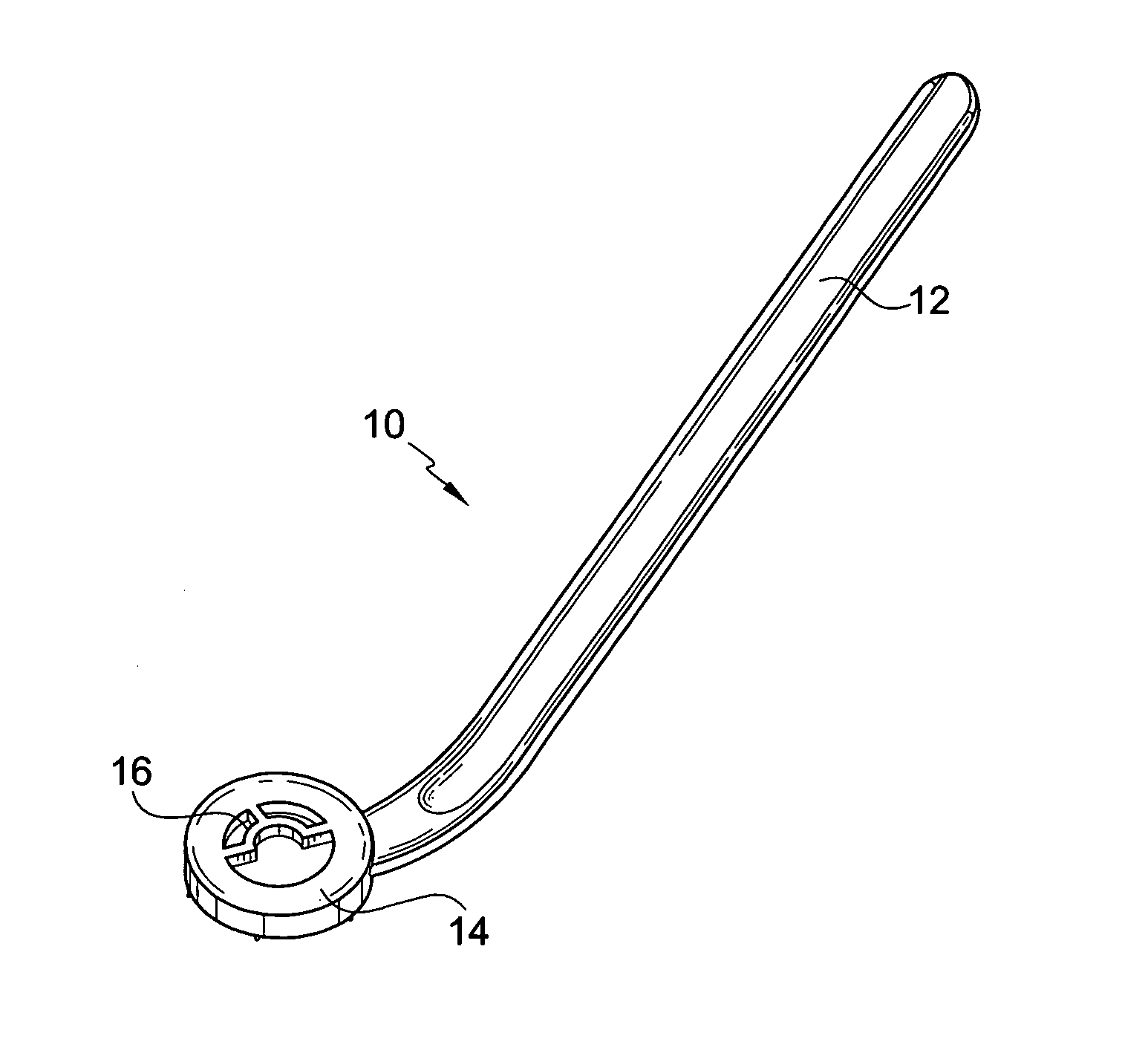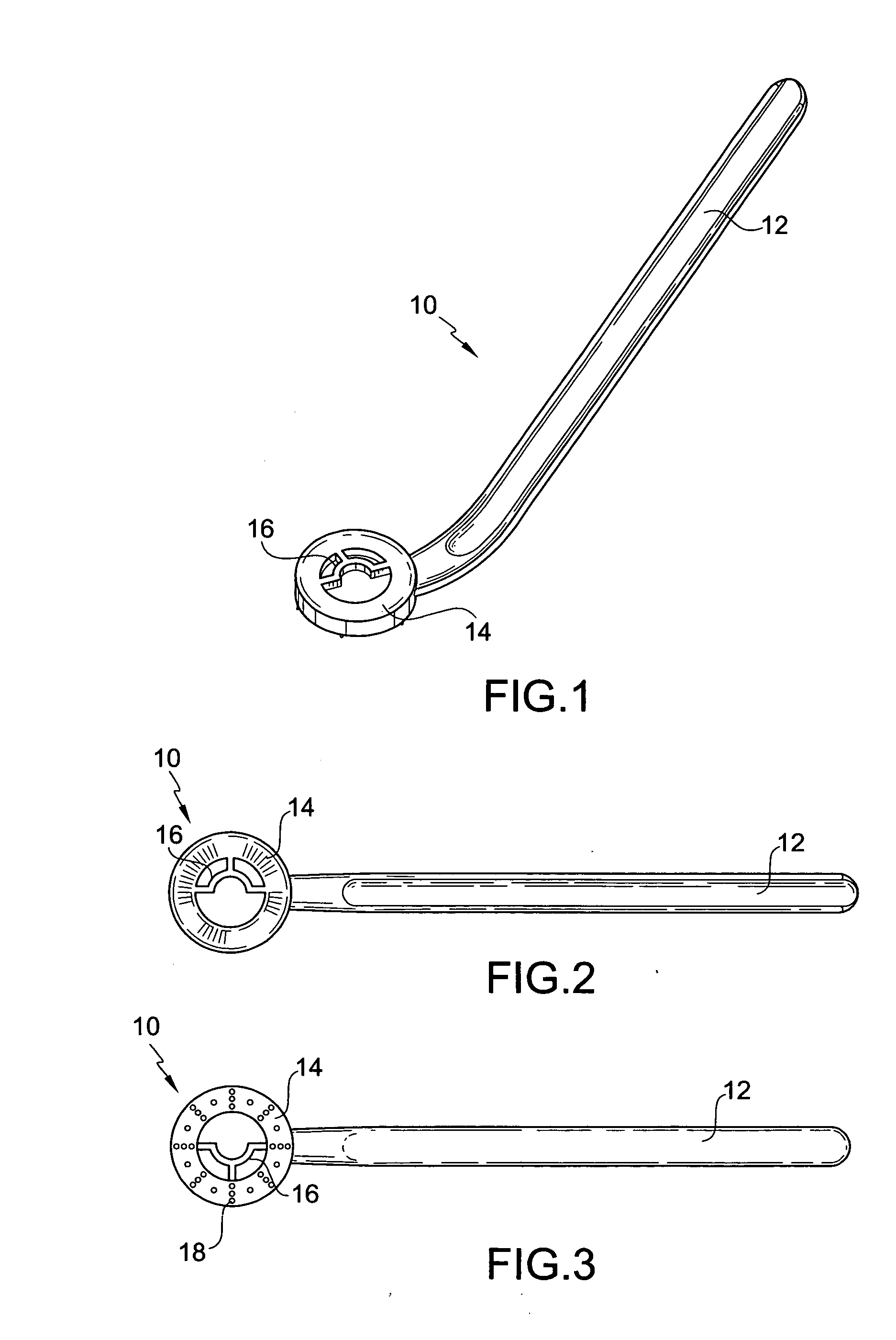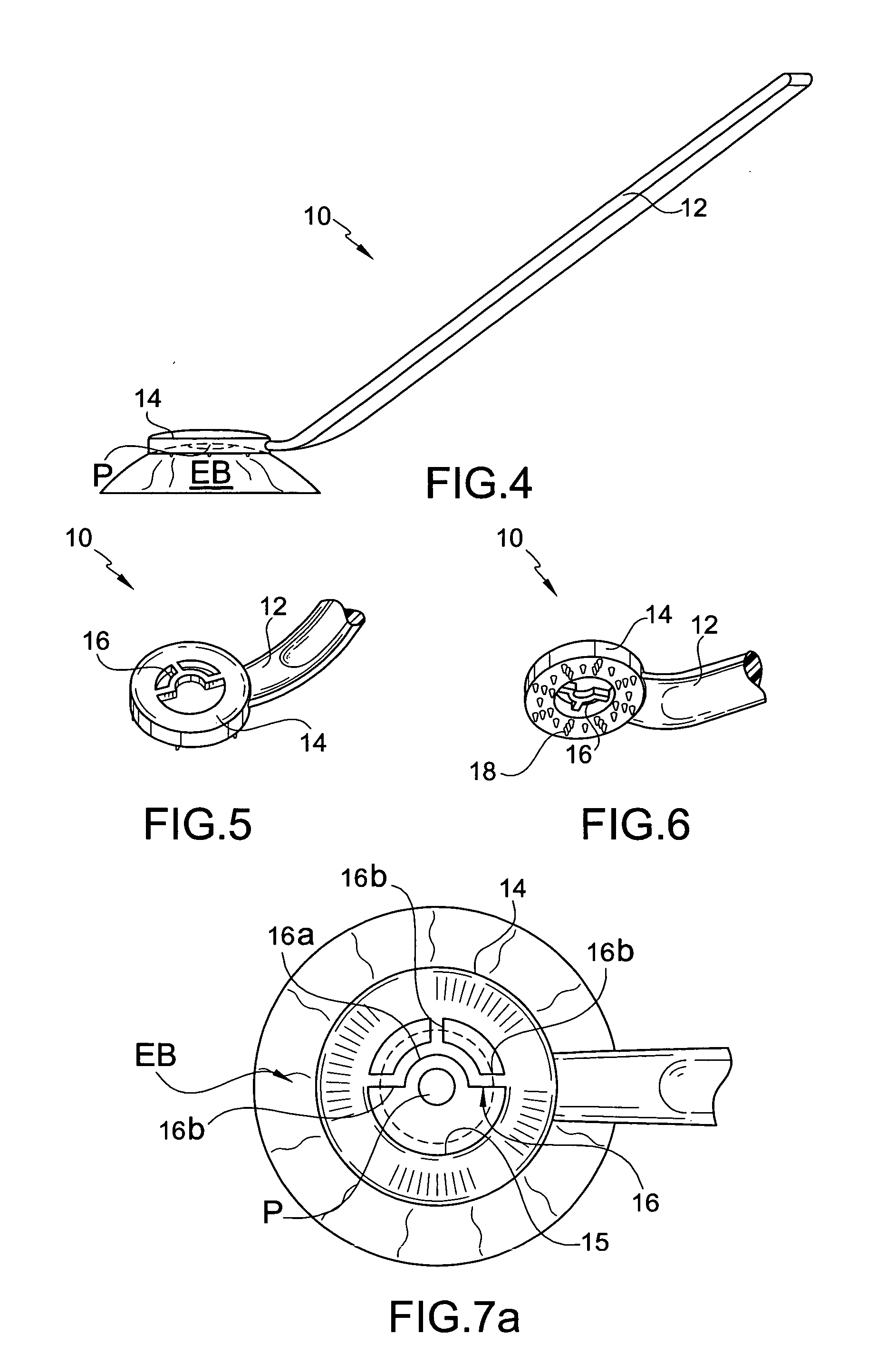Corneal marking device, and method of corneal marking
a marking device and corneal technology, applied in medical science, surgery, diagnostics, etc., can solve the problems of limited application of the current corneal printing device, somewhat difficult to properly center and accurately and precisely apply the printing end of the device onto the cornea of the eye, etc., to facilitate astigmatic correction and accurately judge distances
- Summary
- Abstract
- Description
- Claims
- Application Information
AI Technical Summary
Benefits of technology
Problems solved by technology
Method used
Image
Examples
Embodiment Construction
[0032] A preferred embodiment of the corneal marking device 10 according to the present invention is shown in FIG. 1.
[0033] The corneal marking device 10 includes a handle portion 12 connected to a ring-shaped template end portion 14. Preferably, handle portion 12 and ring-shaped template end portion 14 are made as a single piece, however, the handle portion 12 and ring-shaped template end portion 14 can be made as separate components or parts, and then connected or assembled together.
[0034] The corneal marking device 10 is preferably made of a transparent or see-through plastic material such as polycarbonate, polystyrene or poly theromide resin(s). Further, the corneal marking device 10 is preferably made by an injection molding process in a highly controlled manner so that the device 10 is highly accurate, highly precise, and provides surgical results that are highly reproducible from device to device, procedure to procedure, and eye to eye. More specifically, the use of plastic...
PUM
 Login to View More
Login to View More Abstract
Description
Claims
Application Information
 Login to View More
Login to View More - R&D
- Intellectual Property
- Life Sciences
- Materials
- Tech Scout
- Unparalleled Data Quality
- Higher Quality Content
- 60% Fewer Hallucinations
Browse by: Latest US Patents, China's latest patents, Technical Efficacy Thesaurus, Application Domain, Technology Topic, Popular Technical Reports.
© 2025 PatSnap. All rights reserved.Legal|Privacy policy|Modern Slavery Act Transparency Statement|Sitemap|About US| Contact US: help@patsnap.com



